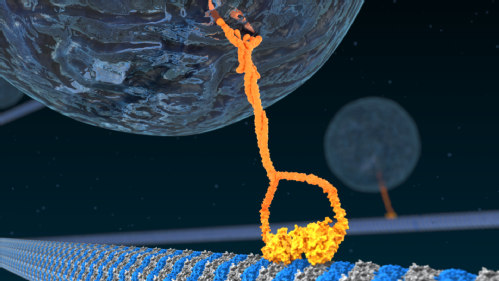Creating Research Animations
About the Author
 Dr Micheala-Livingstone-Banks is a leader and experienced practitioner of public engagement and has developed the Oxford Sparks program for over 6 years, producing 42* research animations (with over 1.8 million views); and a suite of accompanying digital engagement activities and resources (*which also happens to be the answer to the Ultimate Question of Life, the Universe, and Everything, according to Douglas Adams).
Dr Micheala-Livingstone-Banks is a leader and experienced practitioner of public engagement and has developed the Oxford Sparks program for over 6 years, producing 42* research animations (with over 1.8 million views); and a suite of accompanying digital engagement activities and resources (*which also happens to be the answer to the Ultimate Question of Life, the Universe, and Everything, according to Douglas Adams).
Michaela is a part-time independent consultant at the Engagement Associates (a consultancy specialising in engagement, knowledge exchange and evaluation) and a member of the #ResearchRevolutionaries. She is also a Public and Community Engagement Lead at the University of Oxford, working across the mathematical, physical and life sciences departments and other cross-disciplinary strategic projects. Michaela's passion for public engagement began during her PhD, where she co-founded the Science Brainwaves group and went on to become the Special Projects Manager at the UK Association for Science and Discovery Centres, overseeing the strategic and national engagement projects: 'Hands-on DNA' and 'Explore Your Universe'.
Twitter: @a_n_s
Profile: https://www.mpls.ox.ac.uk/our-team/michaela-livingstone
Introduction
Animation is a fantastic medium for conveying information and sharing stories about research - the only limit is your imagination. You are not bound by the real world and can use visual metaphors; creatively unpick or construct hidden worlds; communicate abstract ideas or follow processes and relationships that would otherwise be near-impossible to demonstrate.
Animation doesn’t just mean cartoons for children and can be created in a multitude of different styles and genres for a diverse range of publics and communities - from video abstracts (short animated films that summarise a research output) and infographics to poignant thoughtful pieces.
Using both visual and audio modes improves the chances it will be understood and remembered. Wrap that up in a dynamic and compelling narrative and you increase those odds even more.
This guide takes you through the key steps common to most animation productions when working with creative professionals.
Contents
The guide is divided into three sections which you can navigate through using the buttons at the bottom of each page or using the hyperlinks at the side of the page.
Part 2: The process
- Stage one – plan
- The brief
- Finding your animator
- Stage two – animate
- Script
- Storyboard
- Animate
- Stage three – promote and evaluate
- Promote
- Evaluate
Case Study: Animation in action
Warwick's Quantitative Biomedicine Programme developed a series on animations in 2018 that showed the role of kinesins and microtubules (tiny motor proteins that are responsible for the transport of molecules round our bodies). They formed part of their stand at the popular science festival - New Scientist Live.
Researchers worked closely with the animators to develop animations which showed different processes that kinesins and microtubules are responsible for. These where played on a loop on screens at the back of their stand. As members of the public visiting their stand to take part in different interactive activities, researchers where able to reference the animations to give a clear demonstration of how the activity related back to the role of kinesins and microtubules. They gave a clear picture of how these microscopic proteins worked - bringing them to life for visitors of all ages coming up to the stand.

